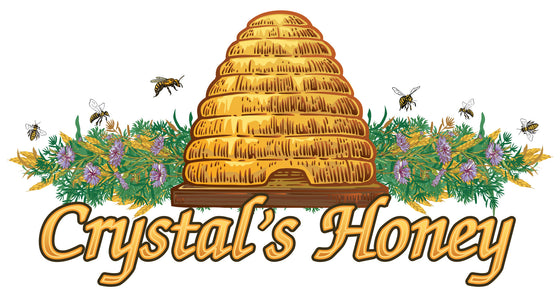Raw honey is a wonderful natural product. It’s created with a large number of components and a very unique process. One of the common questions about honey is, what gives it it’s natural sweetness? Much of the answers are found in the chemistry of honey itself. Learn about the chemistry of honey and what makes it so sweet by reading below.
Raw Honey Is Unprocessed
The sweetness of raw honey and regular honey are different because of the distinct processes they go through. Raw honey retains all its natural sweetness because it’s virtually unfiltered. The only processing it goes through is a simple filtering to remove debris such as beeswax, honeycomb, and possible bees. Regular honey goes through a much more involved process that involves filtering and pasteurizing which removes a number of natural components. Some of these include the pollen, sugars, enzymes, and antioxidants, which make up the honey’s unique flavors.
Honey Begins With Nectar
Bees begin making honey with nectar. The nectar comes from when bees pollinate flowers. Nectar is a thin solution made up of mostly water and is categorized as a complex sugar. The bees use an enzyme that converts the nectar into glucose and fructose—also known as simple sugars. These sugars are healthier, and more digestible than table sugar that’s generally used as sweetener. Raw honey will also vary slightly in taste because of the nectar. Bees pollinate different flowers depending on the region, which means there are different types of nectar.
The Process of Hydrolysis
A crucial part of the chemistry of honey and what makes it sweet is the process of hydrolysis. Hydrolysis refers to when the honeybee changes the complex sugars of flower nectar into simple sugars. Honeybees have an efficient process of adding heat, acids, and enzymes to the complex sugar which turns it to the simple sugars mentioned above. The same process is incredibly hard for scientists to recreate in a laboratory, which is why honeybees are so vital to produce honey. Honeybees produce an enzyme from their salivary glands called invertase. The enzymes are used continuously, which means they’re never fully used up in one process.
The Use of Other Enzymes
Other enzymes play an important part in honey’s flavor and sweetness. The inclusion of Amylase makes it possible for amylose to be broken down into glucose. The presence of glucose is what makes honey sweeter. Regular honey is less sweet than raw honey because the enzymes and glucose have been filtered out. Glucose Oxidase is another enzyme which breaks down the glucose, giving the pH level of the honey more stable.
Crystal’s Honey Inc. offers the closest thing possible to natural raw honey straight from the honeycomb. Here you can select from a variety of full-flavored, natural, sweet raw honey of the highest quality you can trust.
